There are three Washington national parks: Olympic, Mount Rainier, and the North Cascades.
In Olympic National Park, explore the temperate rainforest, hike high into the mountains, and stroll along the rocky, misty coastline. Mount Rainier is an outdoor paradise, with its old growth forests, carpets of wildflowers in the summer months, and network of hiking trails. To the north, explore the incredibly beautiful landscapes of North Cascades National Park.
In this guide to the Washington national parks, get an overview on the best things to see and do in each park, important planning advice, and a sample itinerary to help you plan your Washington road trip.
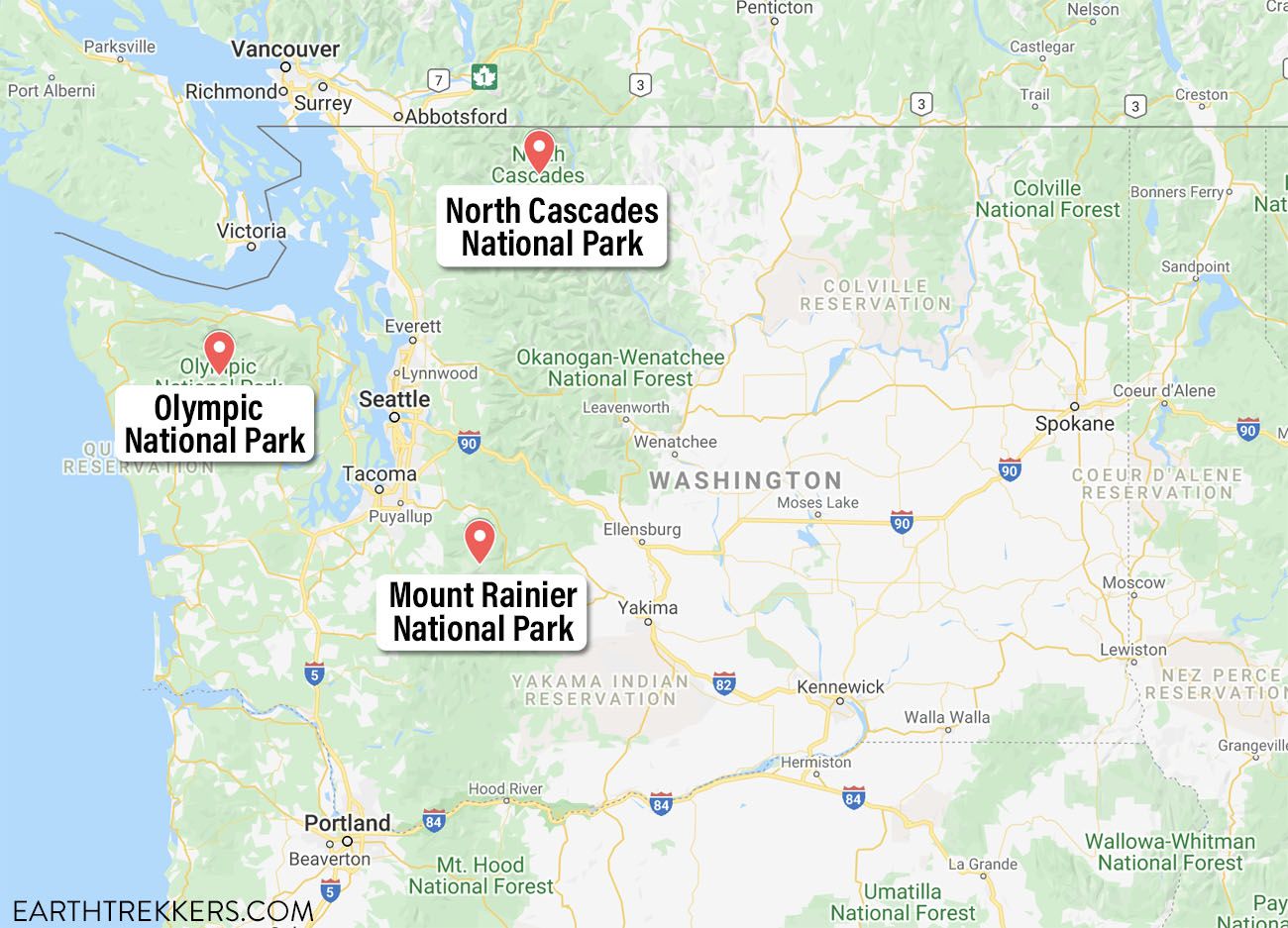
Washington National Parks
Olympic National Park
Olympic National Park is one of the most diverse national parks in the United States. In just one national park, you can climb peaks as high as 8,000 feet, walk through old growth temperate rainforests, and stroll along beaches littered with driftwood.
This is one of the larger US national parks, with an area just under 1 million acres. Due to its size, geography, and various ecosystems, it takes a minimum of three days to visit the main sights.
The best way to visit Olympic National Park is to road trip around it.
Unlike parks such as Yosemite, Arches, and the Badlands, where the main road cuts through the center of the park, the roads in Olympic National Park form a loop on its perimeter. From this loop, you can visit Hurricane Ridge, explore the coastal sights, venture into the dense forests, and spend some time on the quieter but just as scenic southeastern section of the park.
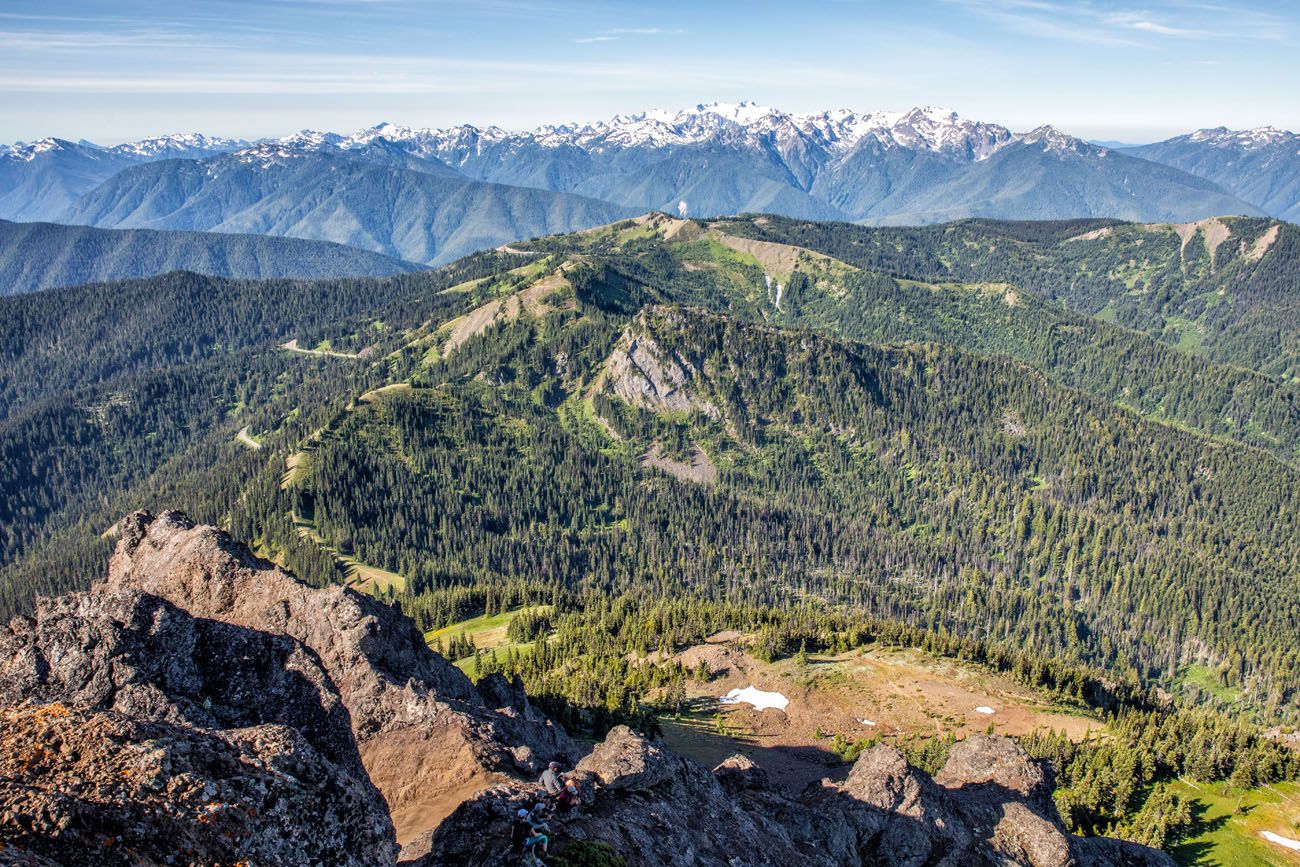
Hurricane Ridge
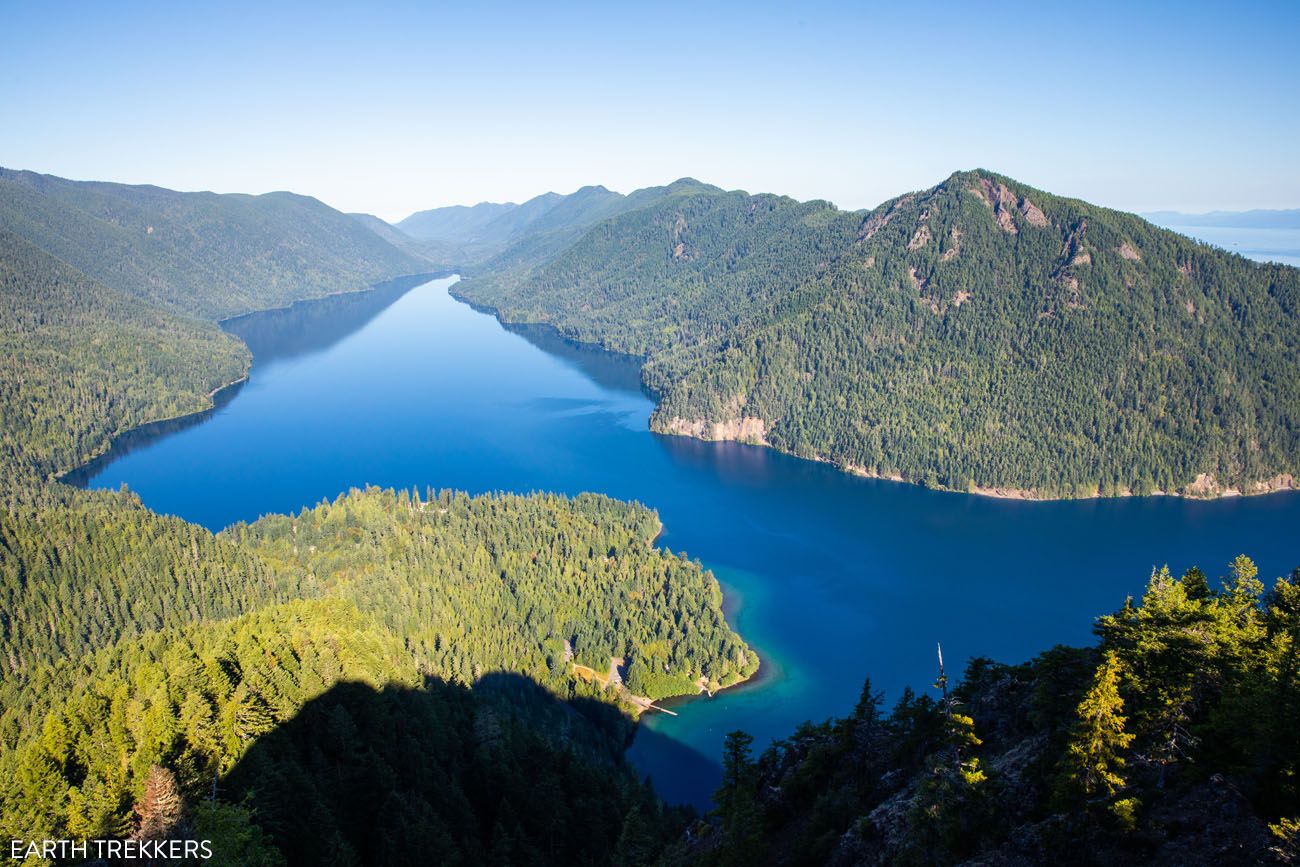
Mount Storm King
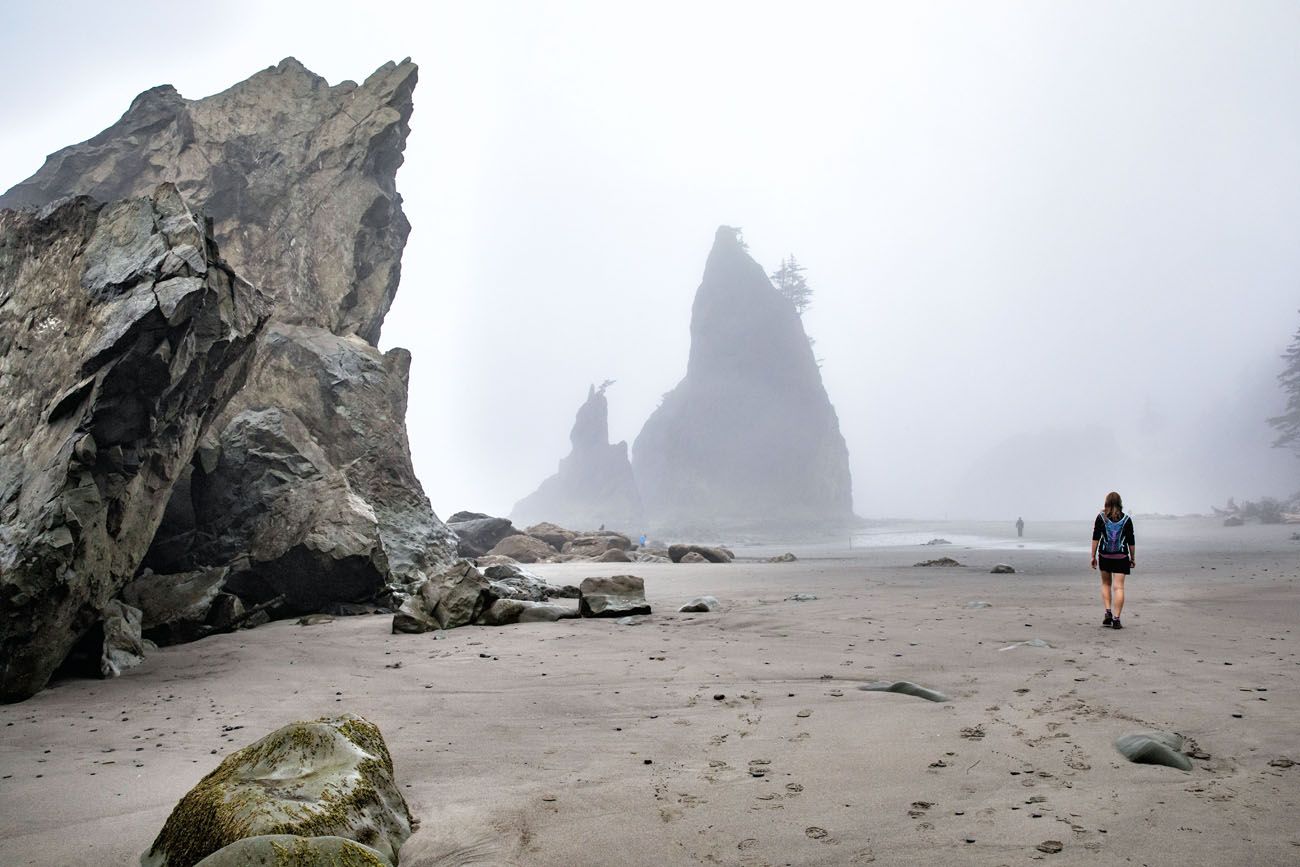
Rialto Beach
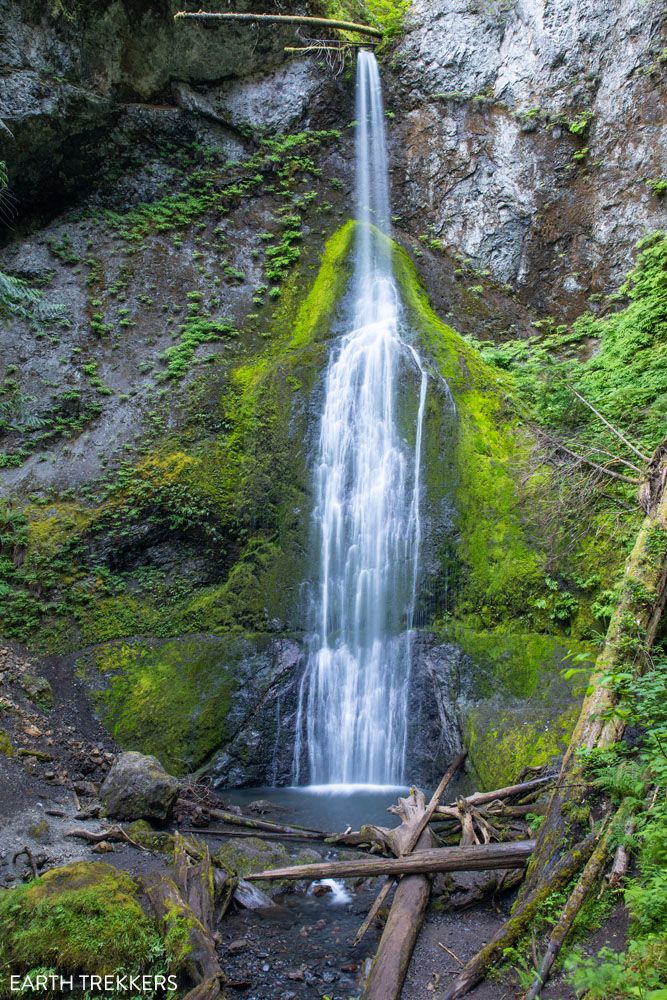
Marymere Falls
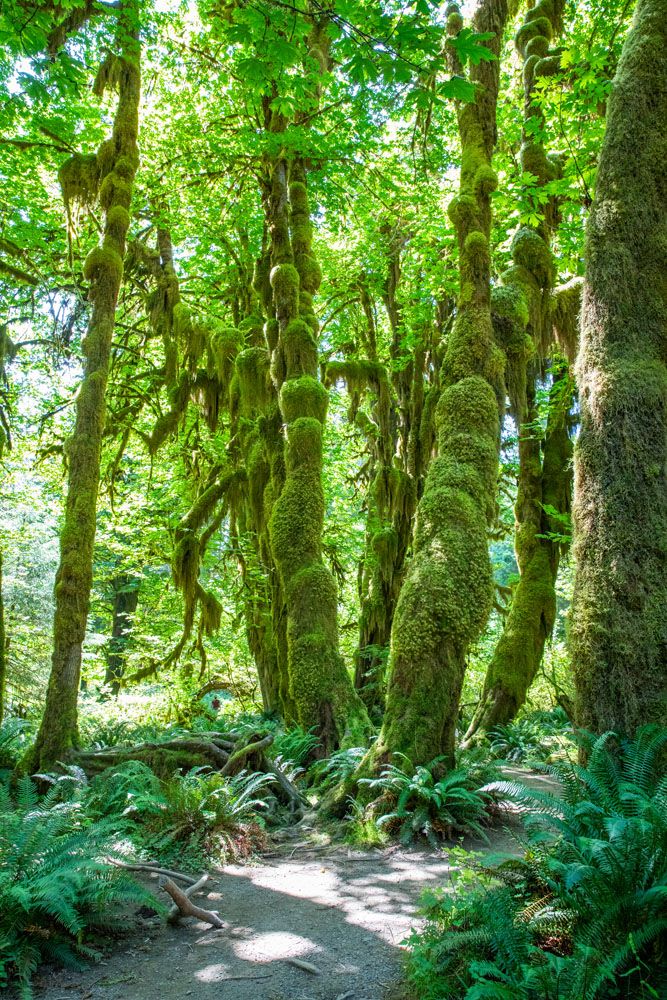
Hall of Mosses
Cost: $30 per vehicle, valid for 7 days
Top Experiences: Go hiking on Hurricane Ridge, photograph the moss dripping from the trees in the Hoh Rainforest, stroll along Rialto Beach until you get to Hole-in-the-Wall, hike to Mount Storm King, see lovely Sol Duc Falls and Marymere Falls, and hike along Shi Shi Beach.
Ultimate Adventure: For the ultimate adventure, go backpacking in the Enchanted Valley or spend the night camping on Shi Shi Beach.
Olympic National Park in One Day: With one very busy day in Olympic National Park, hike one of the short trails on Hurricane Ridge. Drive west, visit the Hoh Rainforest and then spend the afternoon on Rialto Beach. I recommend staying in Port Angeles or near Forks, Washington, to minimize how much time you spend in your car.
Cool Fact: The Hoh Rainforest gets between 12 to 14 feet of rain each year. Most of this falls in the winter months. And Hurricane Ridge can get up to 30 feet of snow each winter!
When to Go: The main park roads in Olympic National Park stay open all year. There are a few interior roads and high-elevation roads, such as Obstruction Point Road, that close due to snowfall. But for the most part, you can visit Olympic National Park year-round.
Where to Stay: There are numerous campgrounds and lodges located around the park. Port Angeles makes a great home base for exploring the northern part of Olympic National Park. Forks, the Kalaloch Lodge, and the Quinault Lodge are convenient locations to visit the coastal sights and western section of the park. Stay in Skokomish to visit the eastern side of Olympic National Park.
Mount Rainier National Park
At 14,411 feet (4,392 meters), Mount Rainier is the tallest mountain in Washington state and the Cascade Range.
Mount Rainier is a glacier-capped, active volcano that can be seen from hundreds of miles away. With its forests of evergreen trees, subalpine lakes, and network of hiking trails, this is an outdoor paradise for many travelers.
This is one of our favorite national parks for hiking.
The hikes are spectacular and you really don’t have to go far to get some truly amazing views. There are many short, relatively easy trails that offer jaw-dropping views of Mount Rainier, making this is a great place to visit for those who want to hike, but not too far.
And if you do want to hike far…you have a lot of great trails to choose from.
Aside from hiking, there are still many wonderful ways to spend your time in Mount Rainier National Park. Have lunch or dinner at the Summit House and enjoy one of the most spectacular views of Mount Rainier. Have brunch at the Paradise Inn. Photograph Mount Rainier from Reflection Lake. And enjoy the scenic drives on the roads that circle around Mount Rainier.
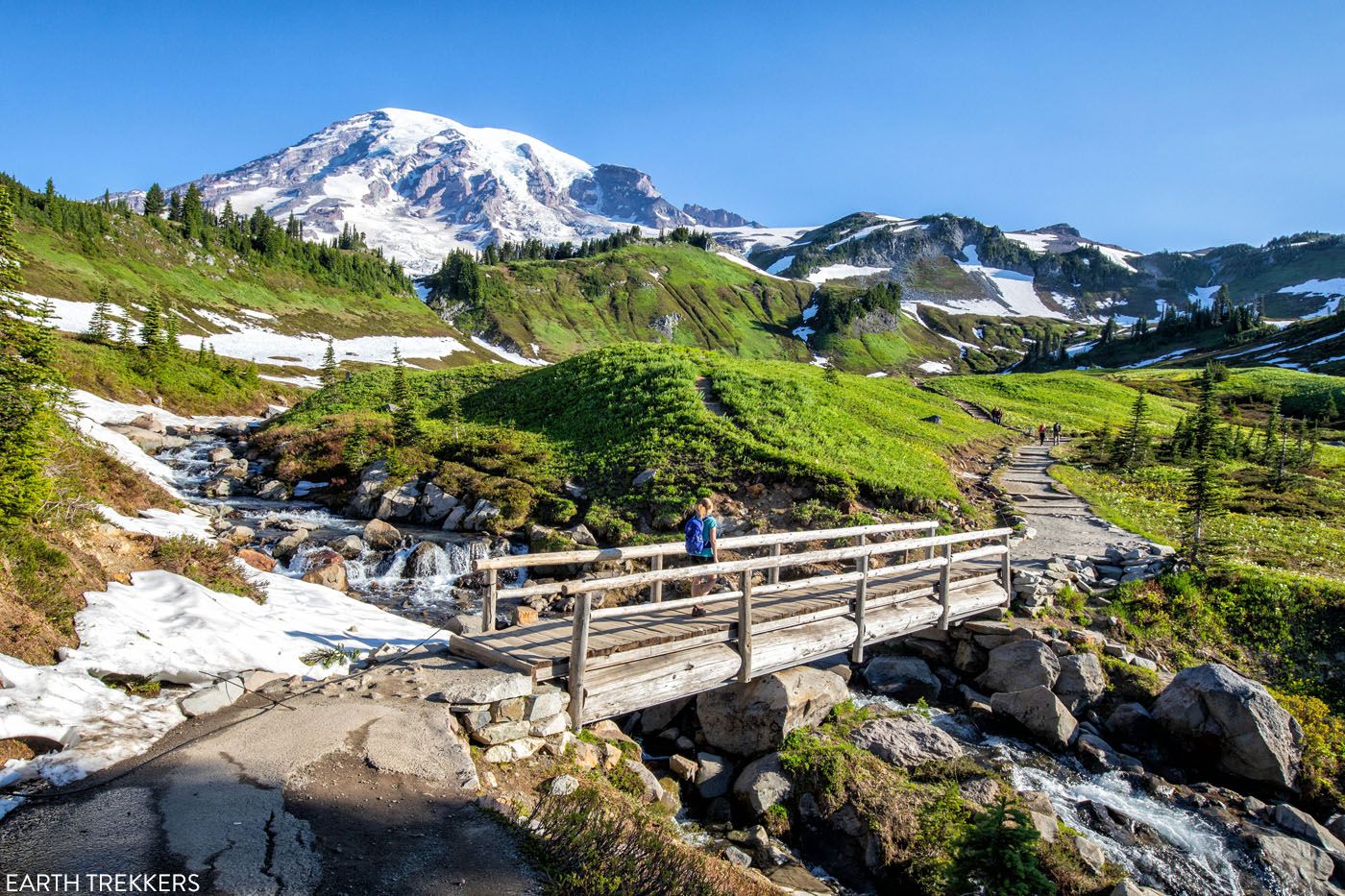
Paradise, Mount Rainier National Park
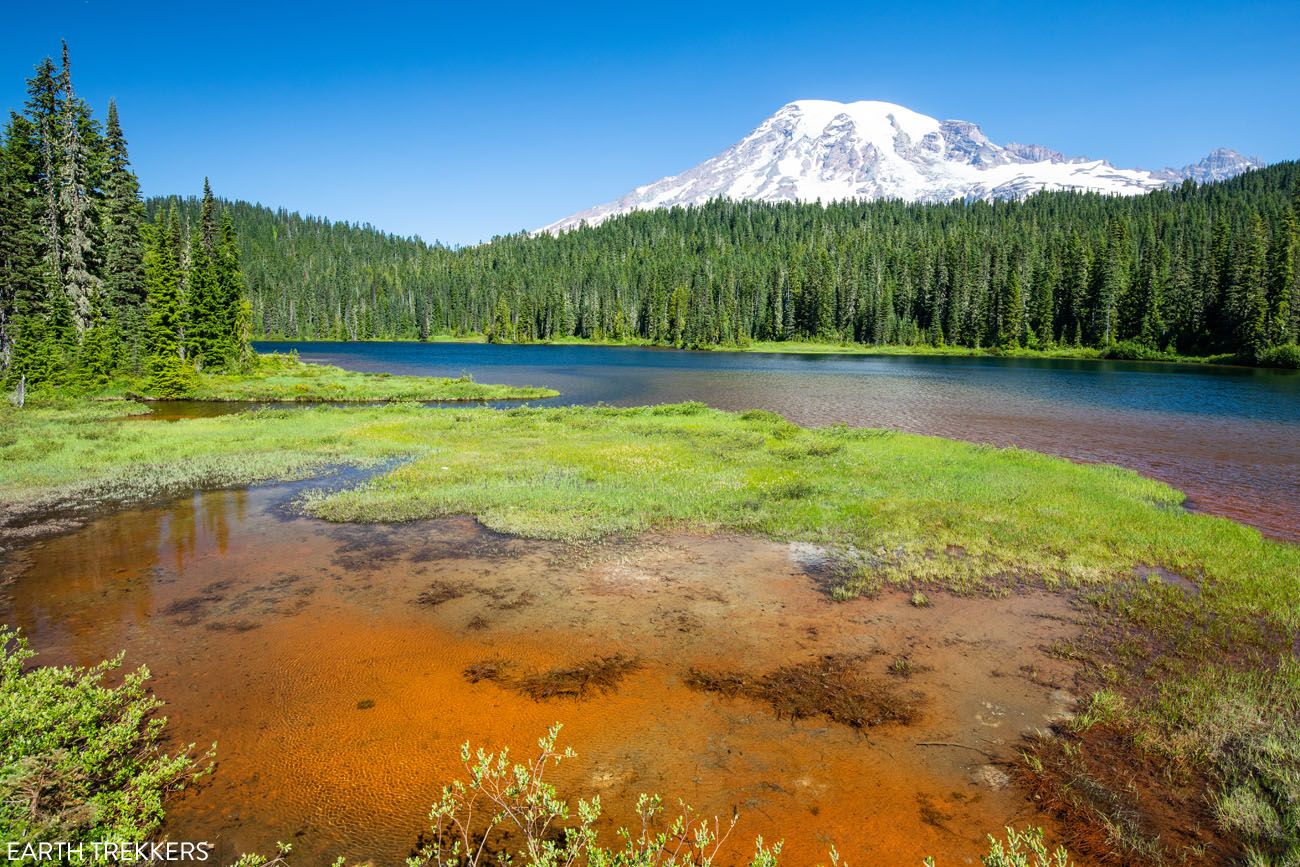
Reflection Lake
Cost: $30 per vehicle, valid for 7 days
Top Experiences:See Myrtle Falls, hike the Skyline Trail in Paradise, have brunch at the Paradise Inn, visit Sunrise and fill your camera’s memory card with images Mount Rainier from the Sourdough Ridge Trail, visit the Grove of the Patriarchs, ride the Mount Rainier Gondola to Crystal Mountain, and hike to a fire lookout tower.
Ultimate Adventure: I’ve got two for you. Hike the Wonderland Trail, a 93-mile trail that circumnavigates around Mount Rainier. On average, this takes between 9 and 13 days. Or, climb to the summit of Mount Rainier. It takes 2 to 3 days to reach the summit and this is best done with an experienced guide.
Mount Rainier National Park in One Day: With one day, you have enough time to visit one area of the park. I recommend choosing between Paradise and Sunrise. Personally, I don’t think that one is better than the other. You have lots of hiking options and spectacular views from both places.
Cool Fact: Mount Rainier is an active volcano. In fact, due to its high probability of eruption in the near future, it is considered to be one of the most dangerous volcanoes in the world.
When to Go: Summer and early fall are the best times to visit, since all of the park roads and hiking trails will be open. The wildflowers typically bloom from mid-July through mid-August. In Mount Rainier, there are several roads that close in the fall and don’t reopen until spring. These include Stevens Canyon Road, Sunrise Road, and the Chinook Pass and Cayuse Pass.
Where to Stay: Packwood, Ashford and the lodges at Sunrise and Paradise are handy locations for exploring Mount Rainier National Park. If you want to visit the northwestern corner, stay in Puyallup.
Timed Entry Permit: If you will be visiting Mount Rainier between late May and early September, you will need a timed entry permit to enter several areas of the park.
North Cascades National Park
North Cascades National Park is one of the least visited national parks in the United States, but for those who venture here, it is a serene, beautiful experience. It is just a short drive from Seattle, Washington but North Cascades only gets a handful of the visitors that flock to nearby Mount Rainier and Olympic National Parks.
With jagged, snow-capped mountain peaks stretching as far as the eye can see, North Cascades is also called “The American Alps.” At times, it really does look like you are standing in Switzerland.
The scenic drives and overlooks give you a glimpse of the beauty of this place, but to truly discover the majesty of the North Cascades, you’ll have to hit the hiking trails.
There are three sections to North Cascades National Park Complex: the Chelan Lake National Recreational Area (which includes Stehekin), Ross Lake National Recreational Area, and North Cascades National Park.
Most visitors spend their time along Highway 20 (North Cascades Highway), which is located in the Ross Lake National Recreational Area. But for hikers and backpackers, 400 miles of trails criss-cross their way through the North Cascades, including a portion of the Pacific Crest Trail.
North Cascades is one of the least visited parks in the national park system. In 2022, it only had 30,000 visitors, making it the 6th least visited national park in the United States.
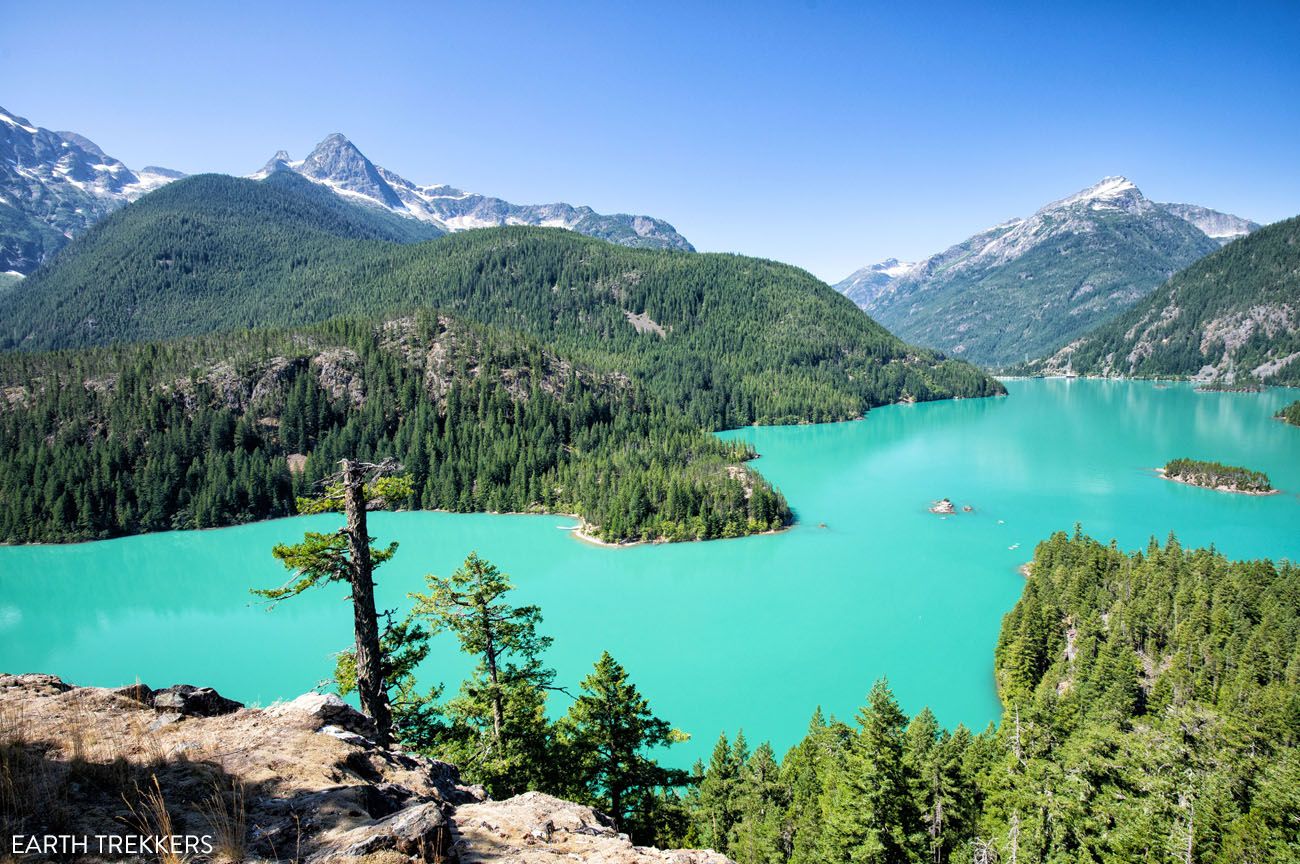
Diablo Lake
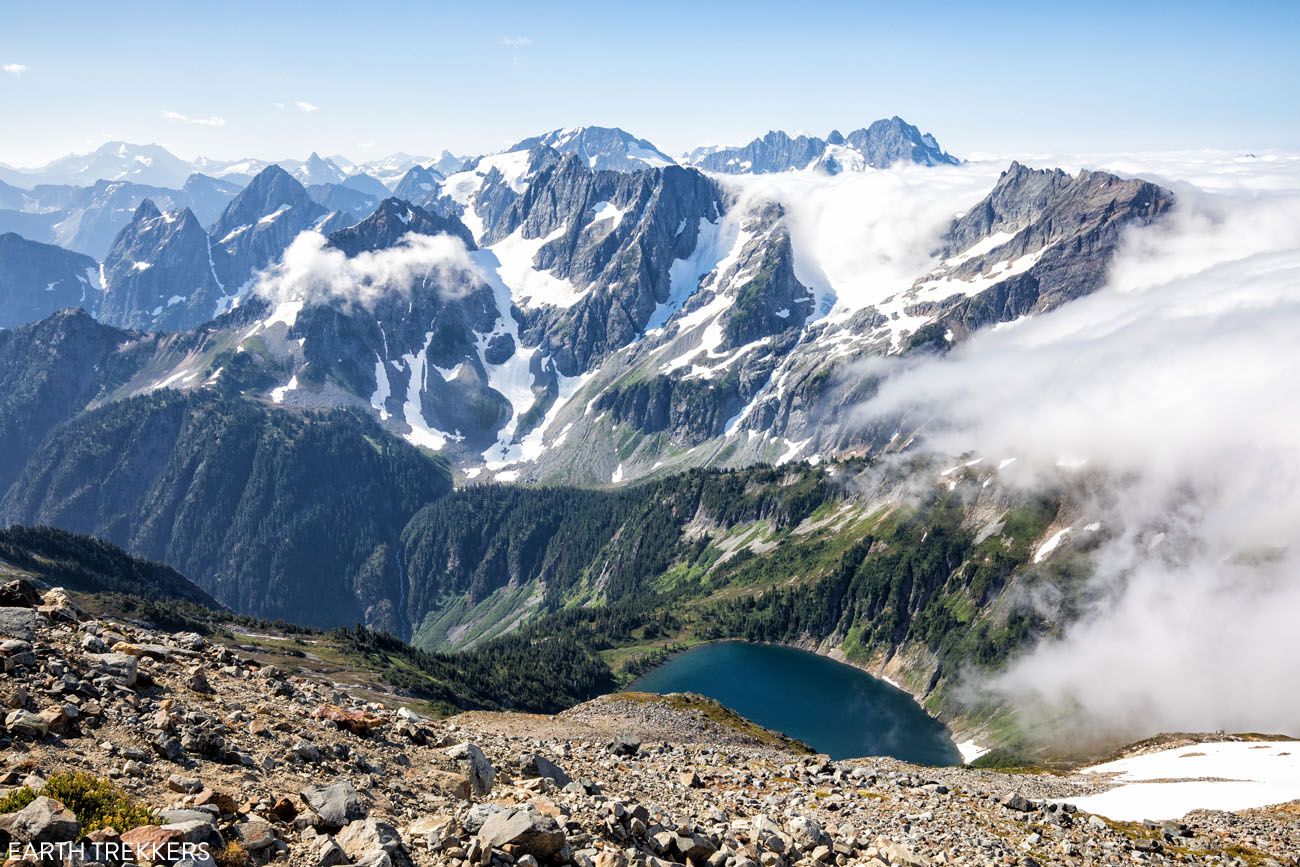
View from Sahale Arm Trail
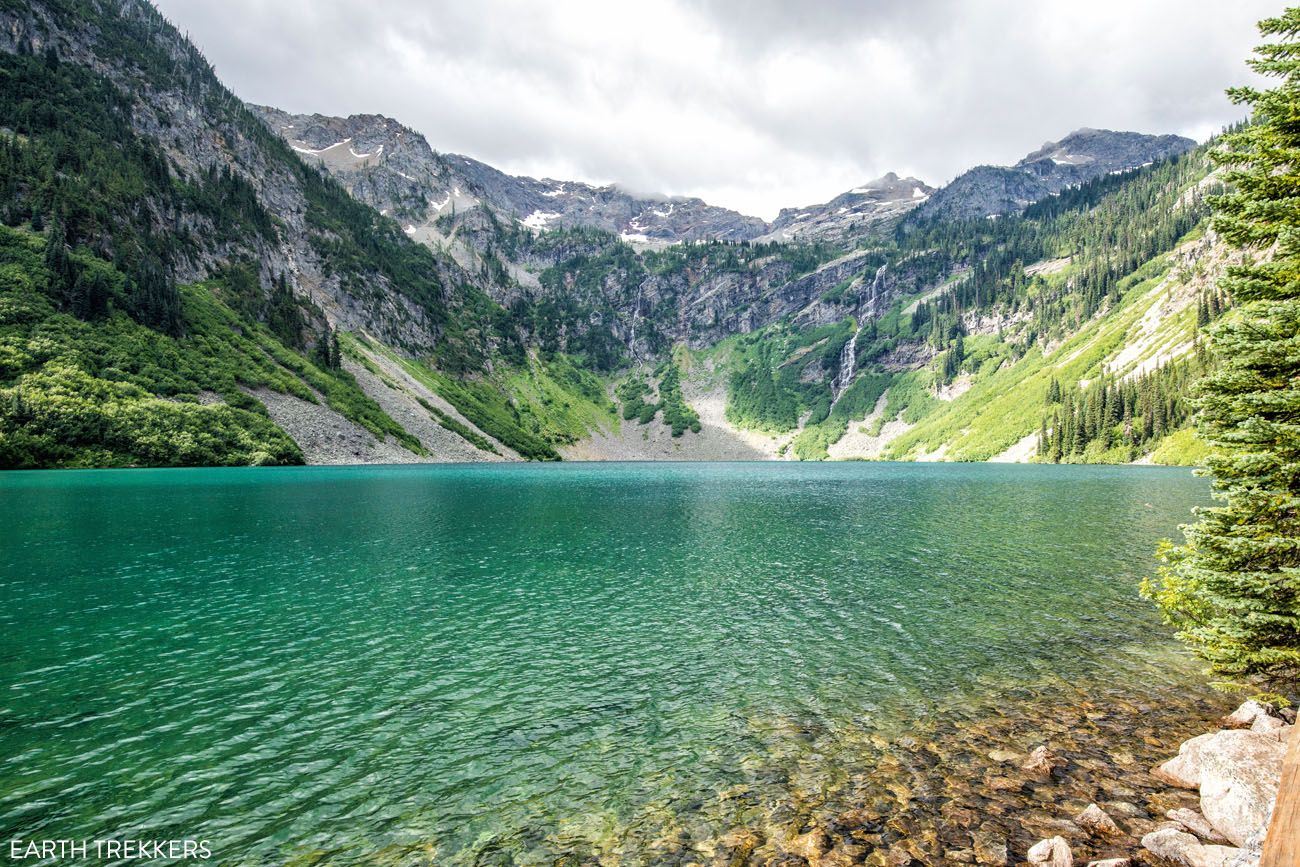
Rainy Lake
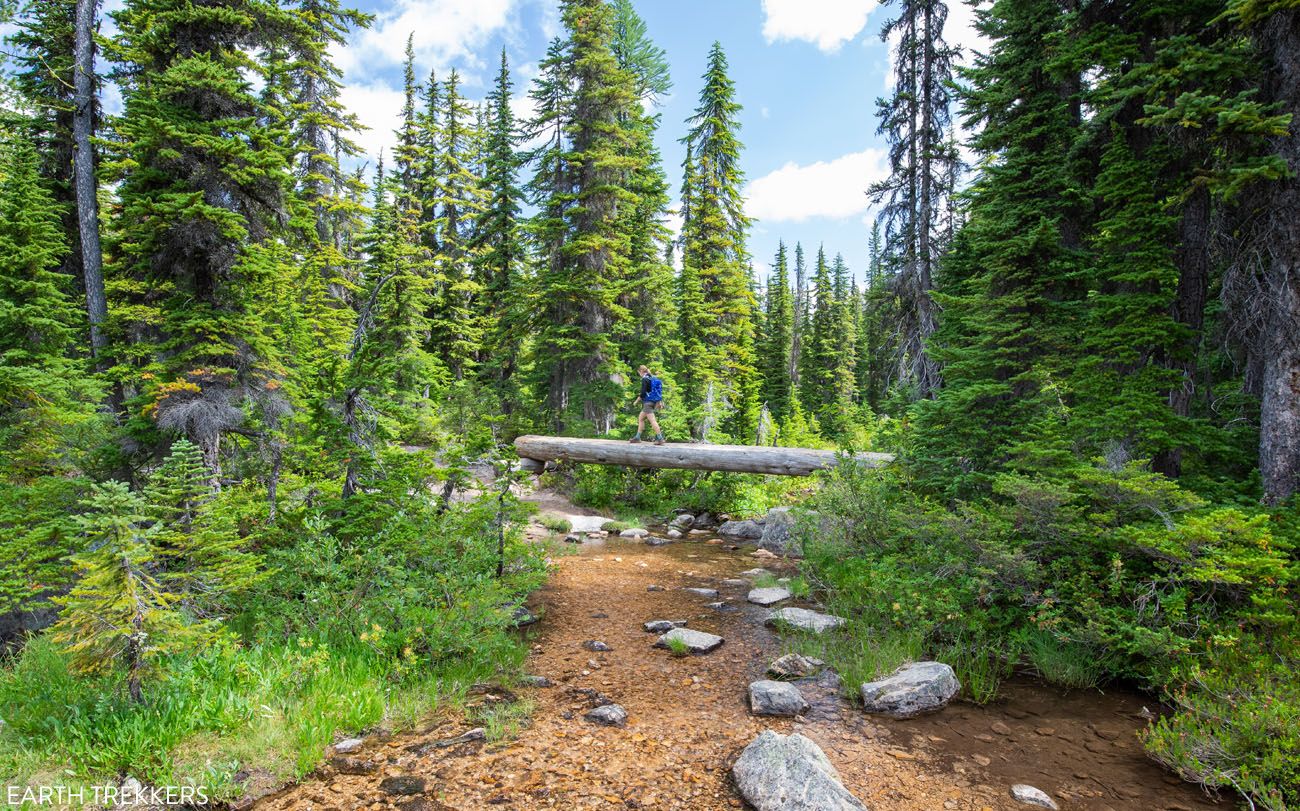
Hiking to Cutthroat Lake
Cost: There is no entrance fee. However, if you plan to hike in one of the adjacent national forests (such as Rainy Lake or the Maple Pass Loop) you will need a Northwest Forest Pass. This can be purchased for $5 at the trailhead.
Top Experiences: Go for a scenic drive along North Cascades Highway, hike to Cascade Pass and Sahale Arm, enjoy the views from the Washington Pass Overlook and the Diablo Lake Vista Point, hike the Maple Pass Loop, and visit Stehekin.
Ultimate Adventure:Hike a portion of the Pacific Crest Trail. 18 miles of the PCT travels through the park. You will need a backcountry permit if you plan to camp overnight along the trail.
North Cascades National Park in One Day: With one day in North Cascades National Park, drive North Cascades Highway, visit the overlooks, and do one or two hikes. If you prefer short, easy hikes, we recommend Rainy Lake, Blue Lake, or Thunder Knob. For something more challenging that will offer spectacular views of the North Cascades Range, the Maple Pass Loop is amazing.
Cool Fact: The North Cascades Range, for which this park is named, has the largest glacial system in the United States, other than Alaska. In the park, there are over 300 glaciers and 300 lakes. Over millions of years, these glaciers created some of the steepest mountain ranges in the USA, with some mountains rising 4,000 to 6,000 feet above their bases.
When to Go: If you want access to the entire park, plan your visit for the summer months, when all of the roads are open. This is also your best chance for sunny skies and warm temperatures, although rain and snow are a possibility all year long. Highway 20, the main road in North Cascades National Park, is typically closed from early November through early May.
Where to Stay: Twisp, Winthrop, and Mazama are all located east of the park and make a great home base for exploring North Cascades National Park. The Ross Lake Lodge is the only lodging inside of the park. On the west side, Marblemount is a good place to stay if you plan to hike one of the trails that are located on Cascade River Road (such as the Cascade Pass and Sahale Arm hike).
Road Trip Itinerary and Map
The best way to visit all three Washington national parks is on a road trip. Ideally, you need 10 days to do this. Not only is there a lot to do in each of these parks but they are spread out across the state of Washington, so you will spend a nice chunk of time driving from park to park.
To get the full details on how to do this same itinerary, and get suggestions if you have more or less time, read our article Washington Road Trip Itinerary: 7 to 14 Days in the National Parks.
Day 1: Arrive in Washington, drive to Port Angeles
Day 2: Olympic National Park
Day 3: Olympic National Park
Day 4: Mount Rainier National Park
Day 5: Mount Rainier National Park
Day 6: Leavenworth
Day 7: Lake Chelan
Day 8: North Cascades National Park
Day 9: North Cascades National Park or Mount Baker
Day 10: Fly Home
Things to Know Before You Go
Best Time to Visit the Washington National Parks
The best time to visit the Washington national parks is in the summer months (mid-July through the end of September), when the roads in all three of the national parks are open.
From late September through May/June, several park roads will be closed in each of the parks, giving you limited access to the main sights.
America the Beautiful Pass
If you plan to visit all three Washington national parks, your grand total only comes to $60.
The America the Beautiful Pass is an annual park pass that costs $80 and is valid for one year. It won’t save you money on this trip, but you will get free admission to any other national park or federal recreation sites that you visit within 365 days of purchasing this pass. Learn more here.
Important Links for the Washington National Parks
Here are the links to each national park website. Check park conditions and road closures as you plan your trip and before your visit.
If you have any questions about how to visit the Washington national parks, or if you want to share your experience, let us know in the comment section below.
More Information for Your Trip to Washington
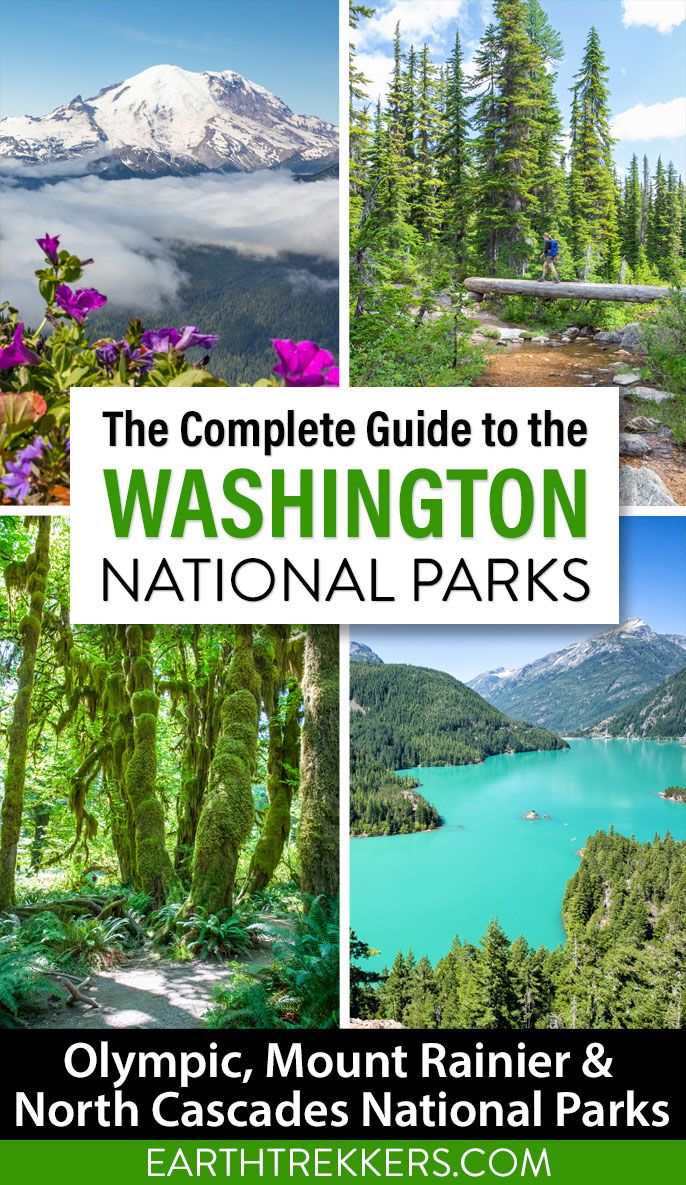
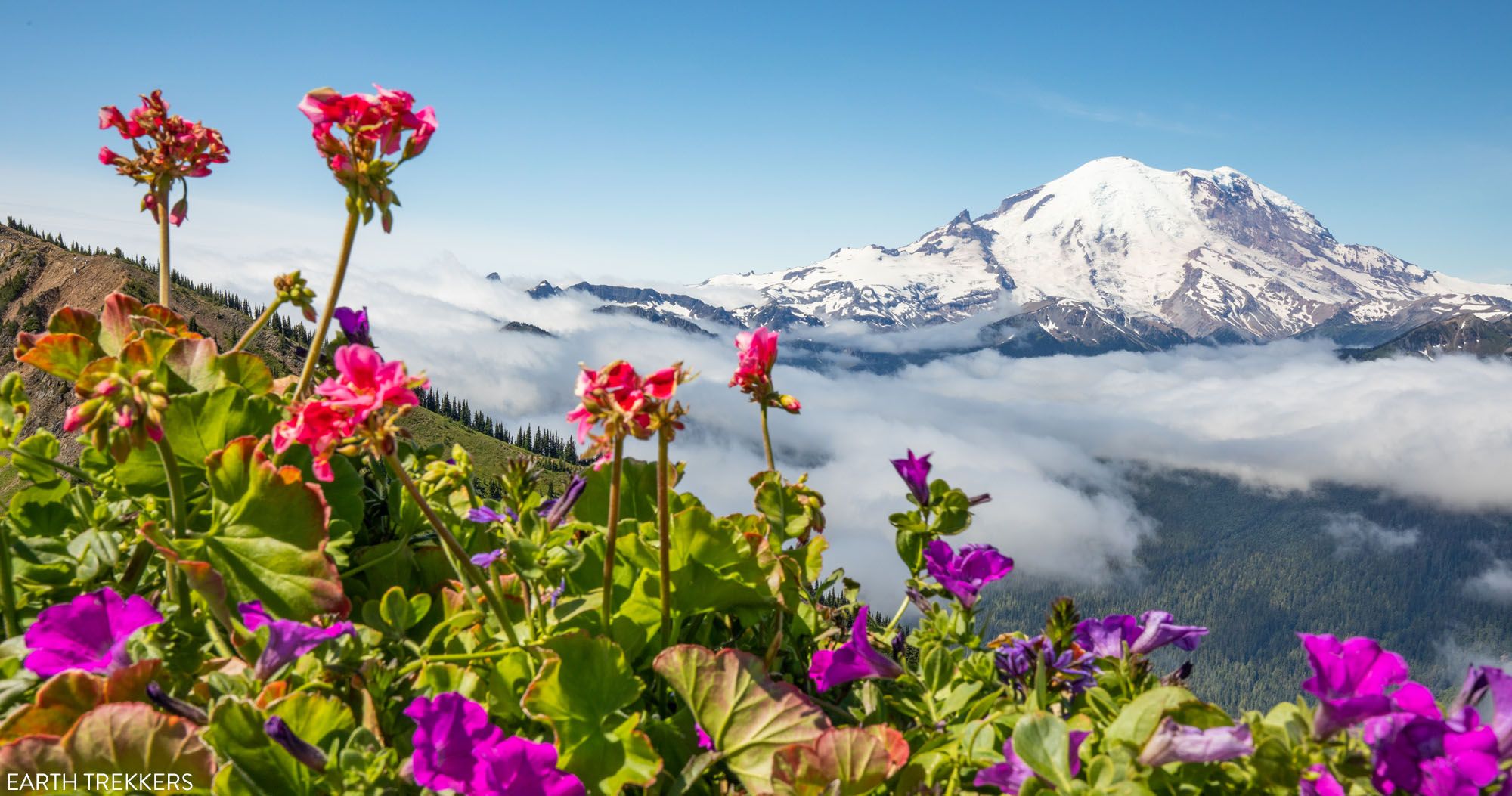
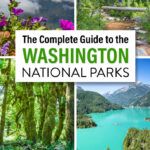
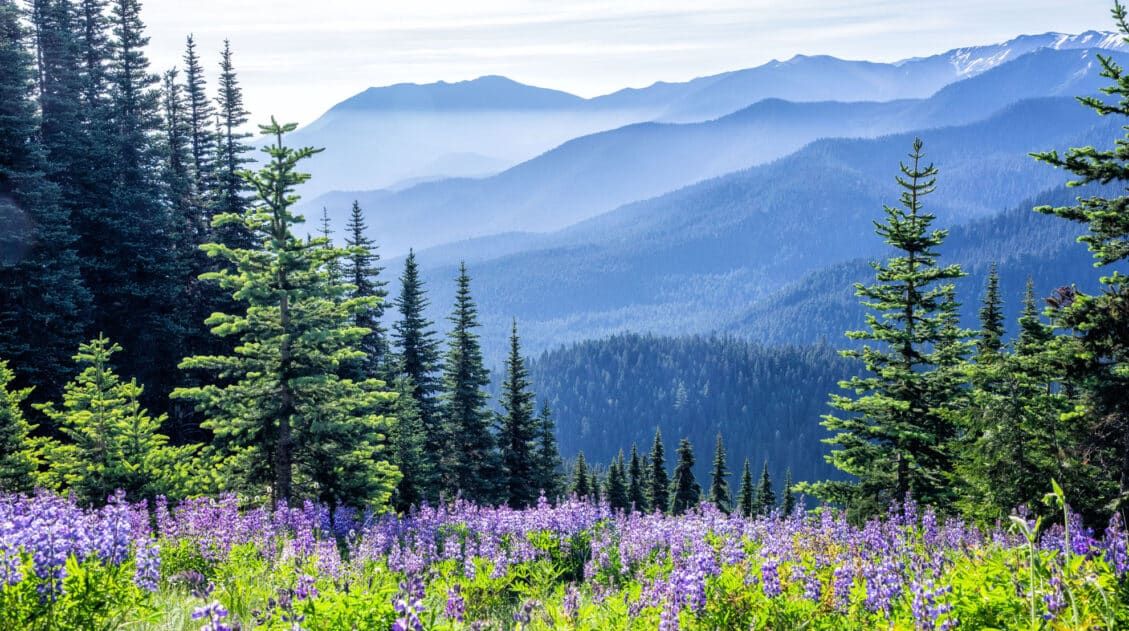
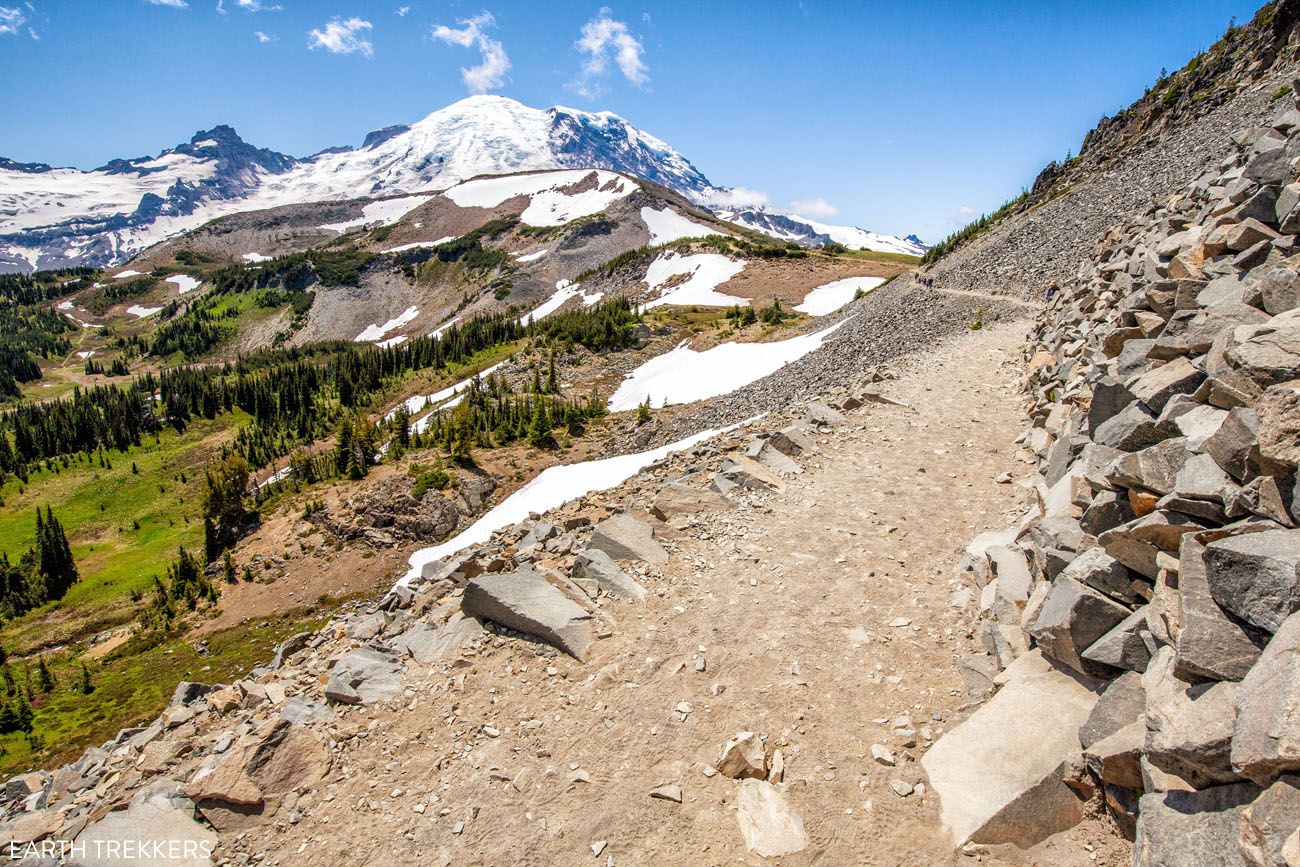
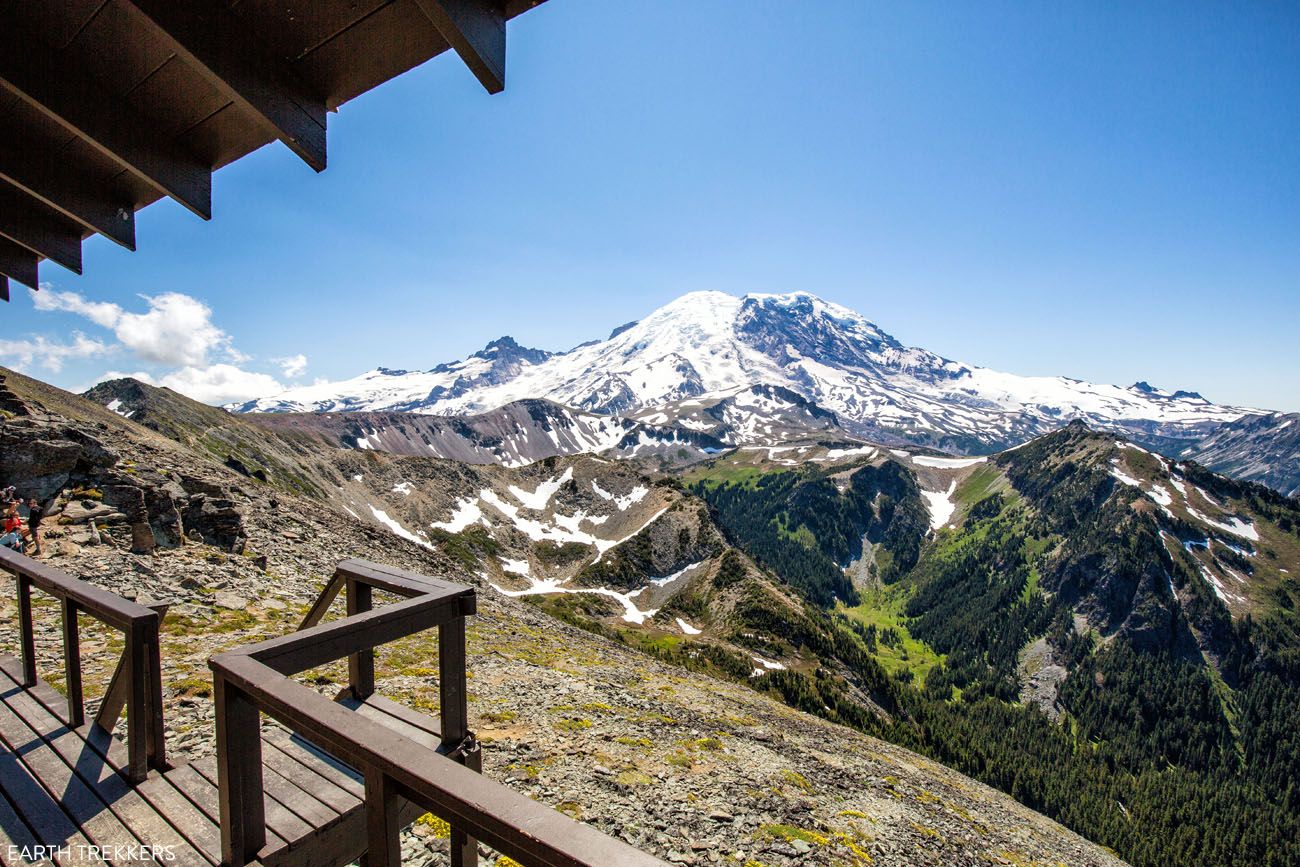
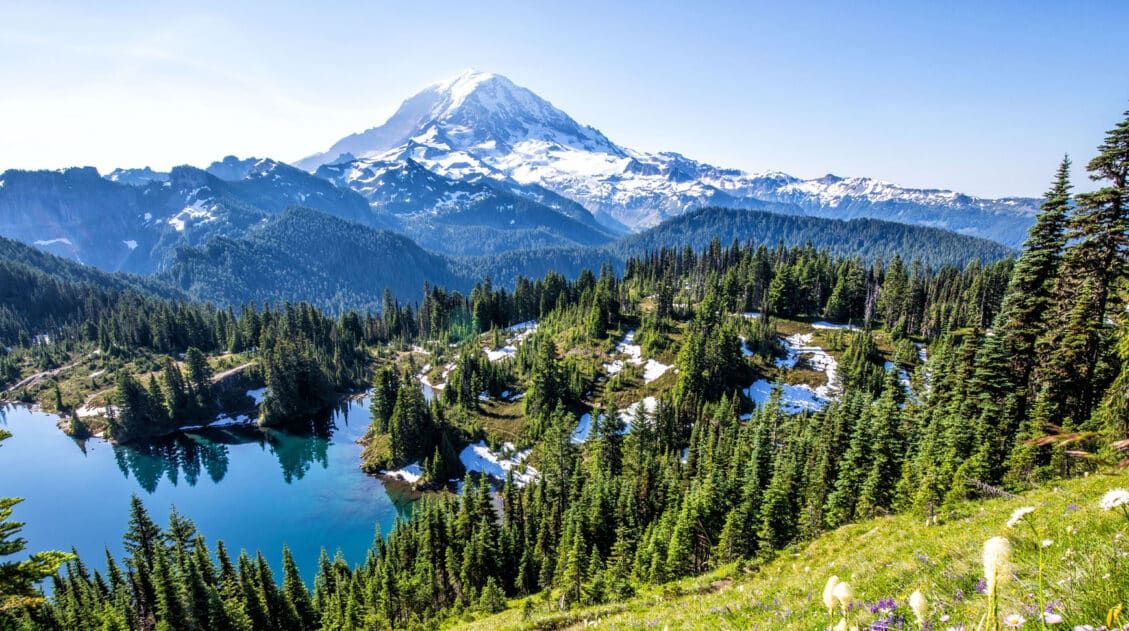
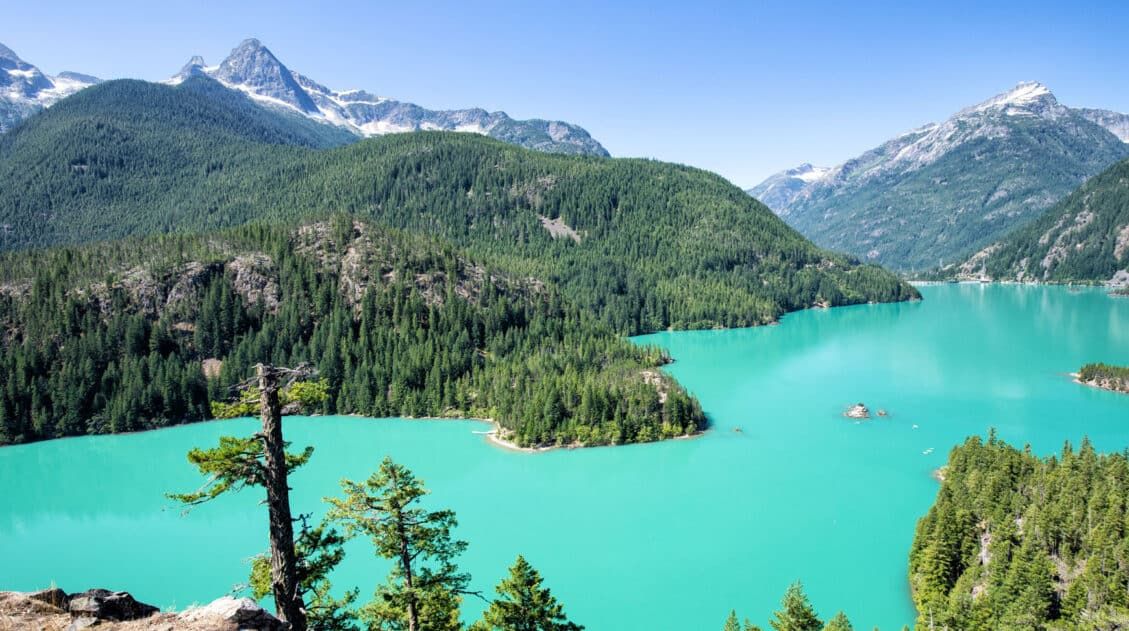
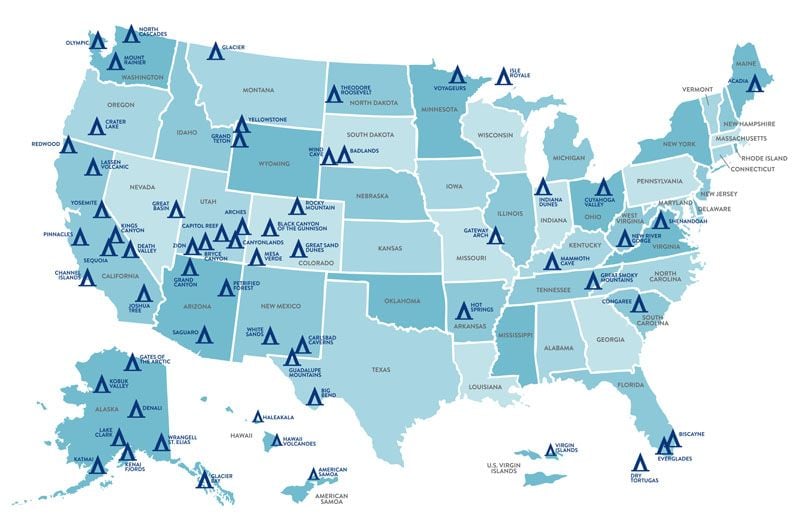
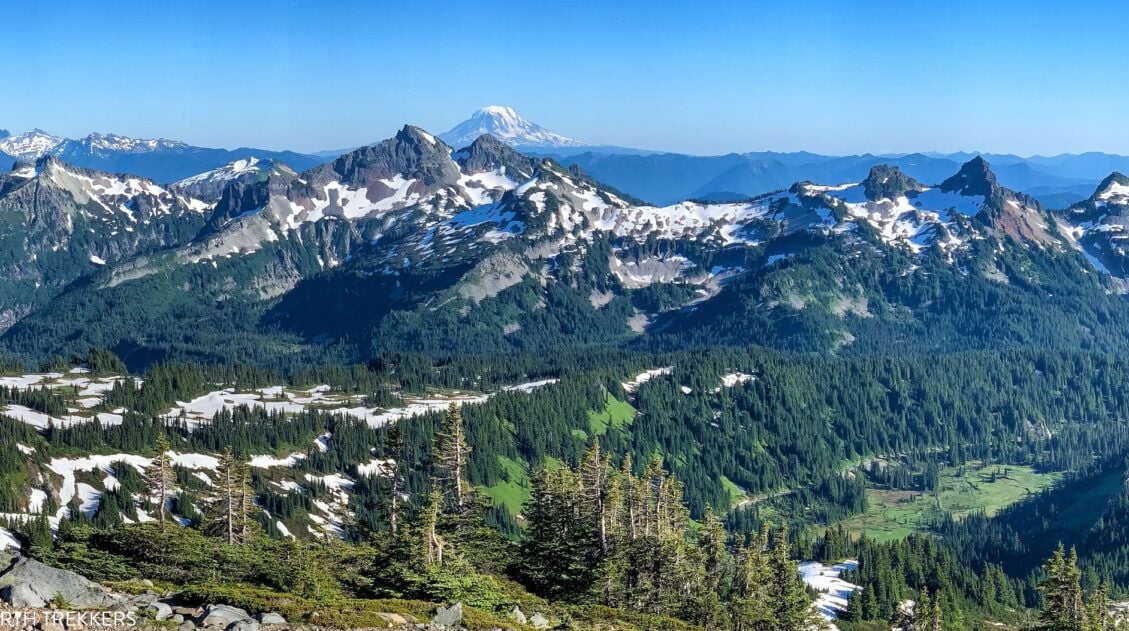
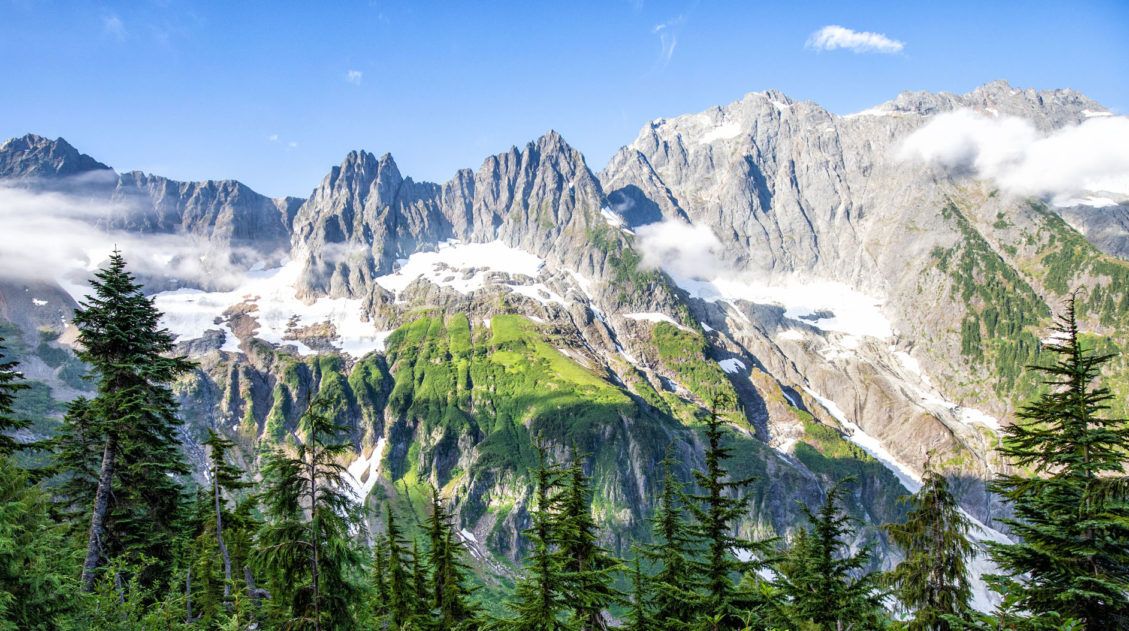
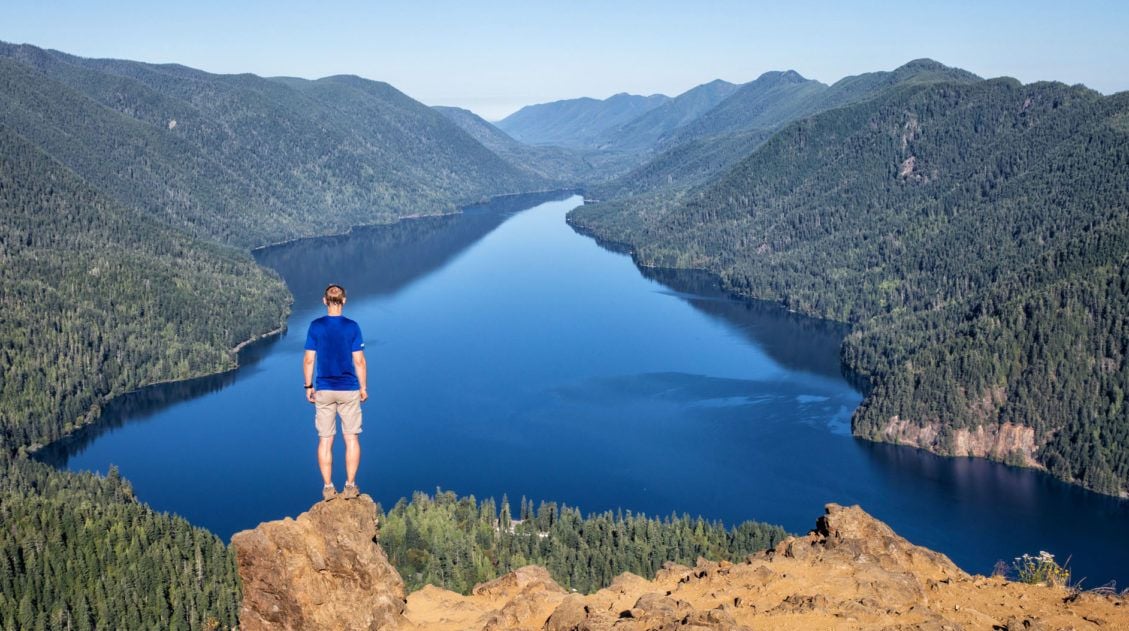
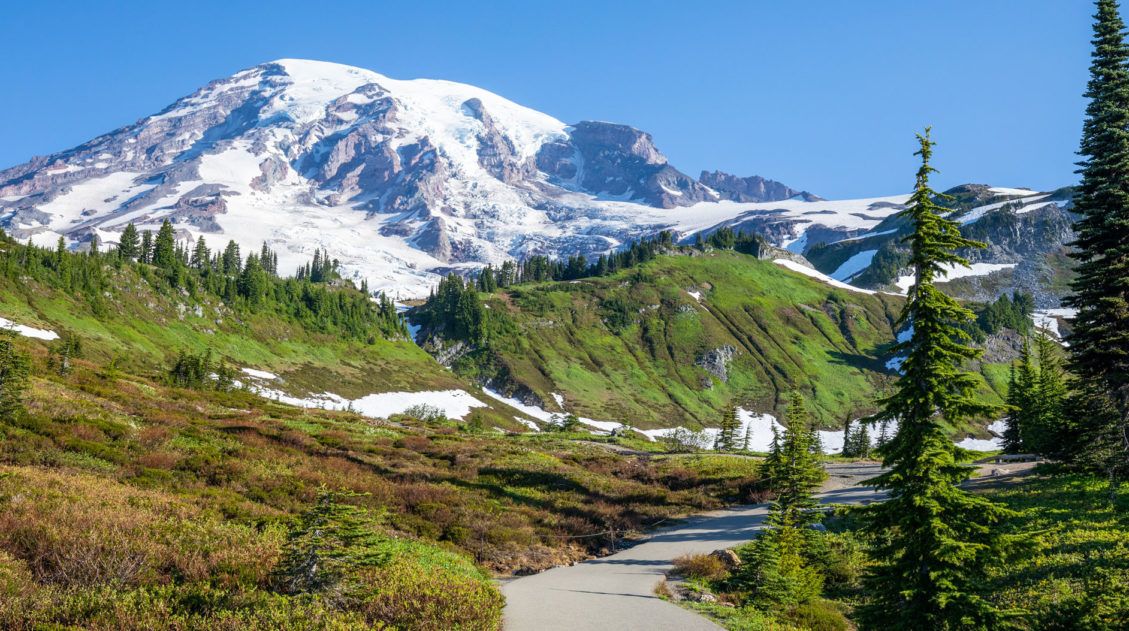
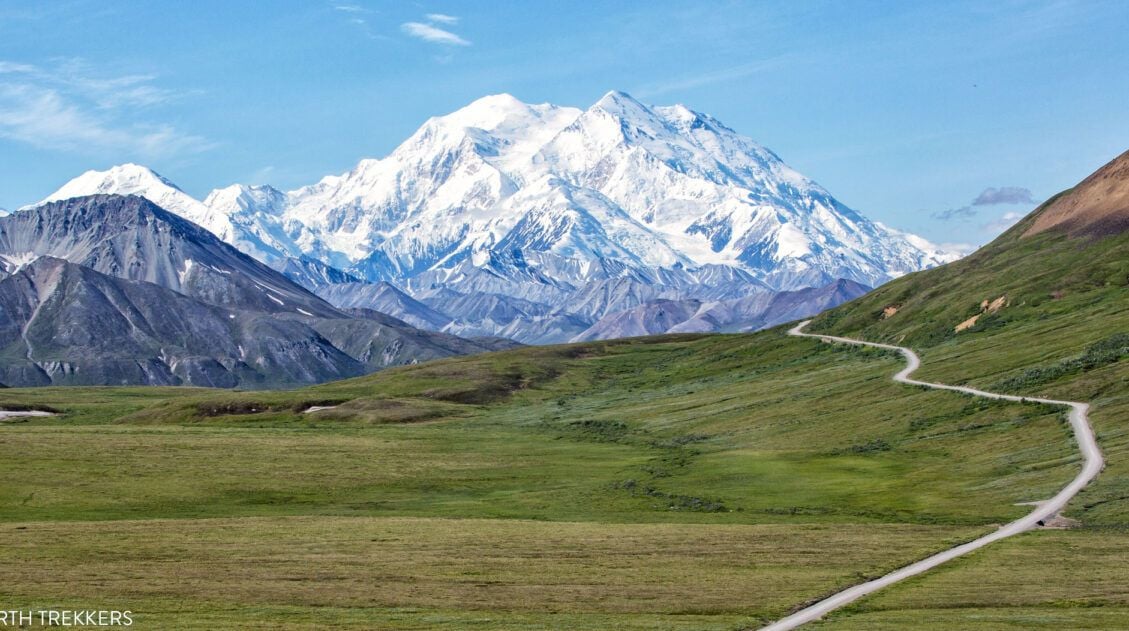
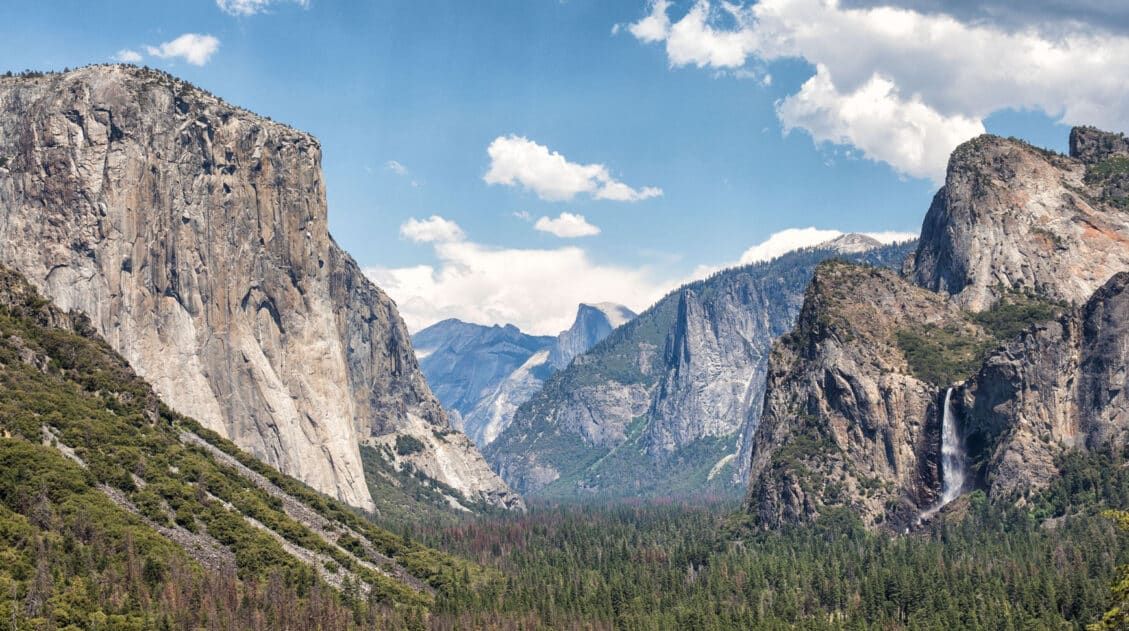
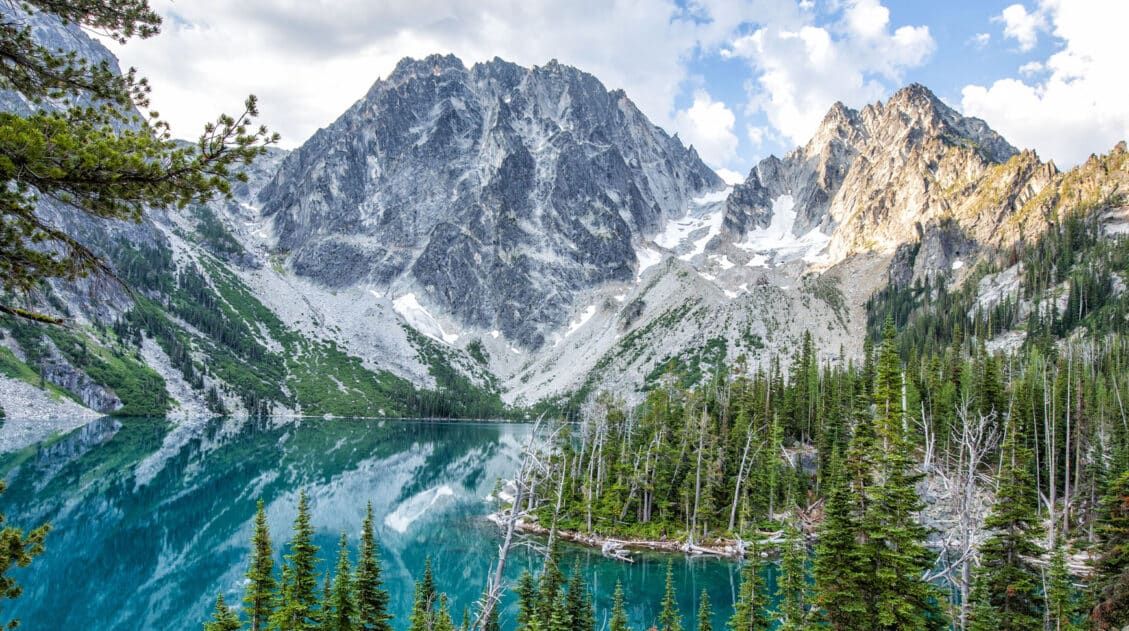
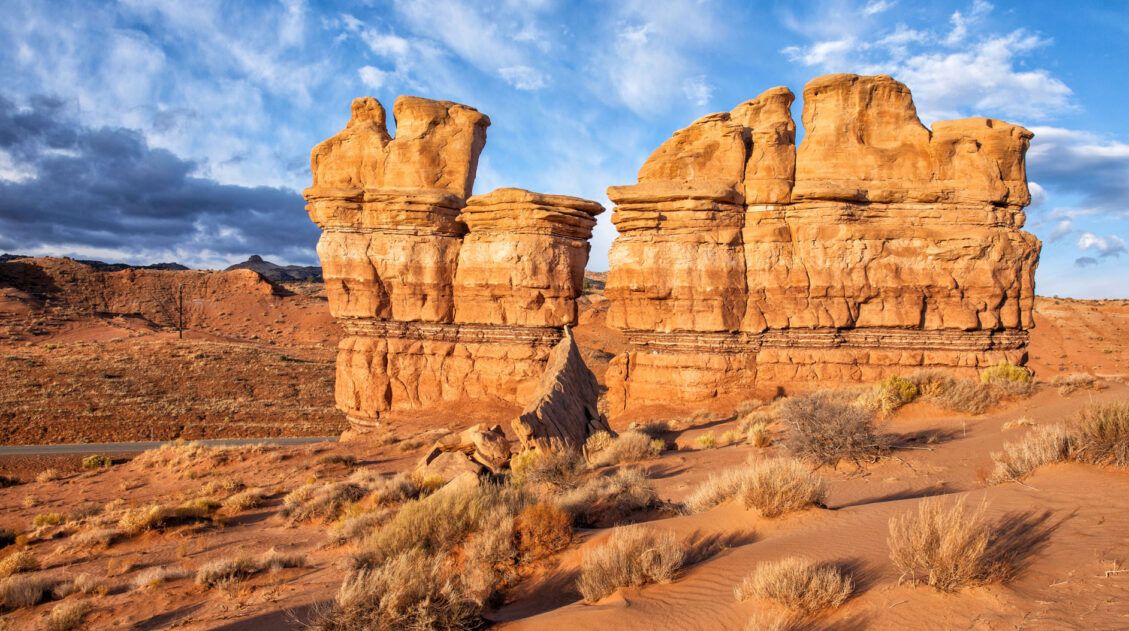
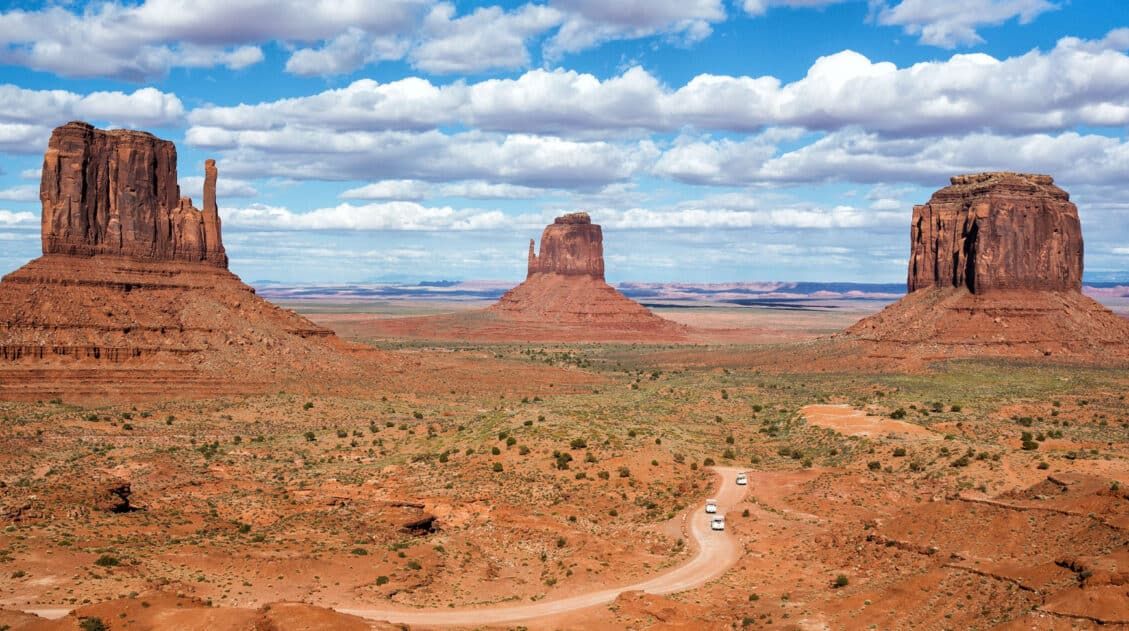
Comments 5